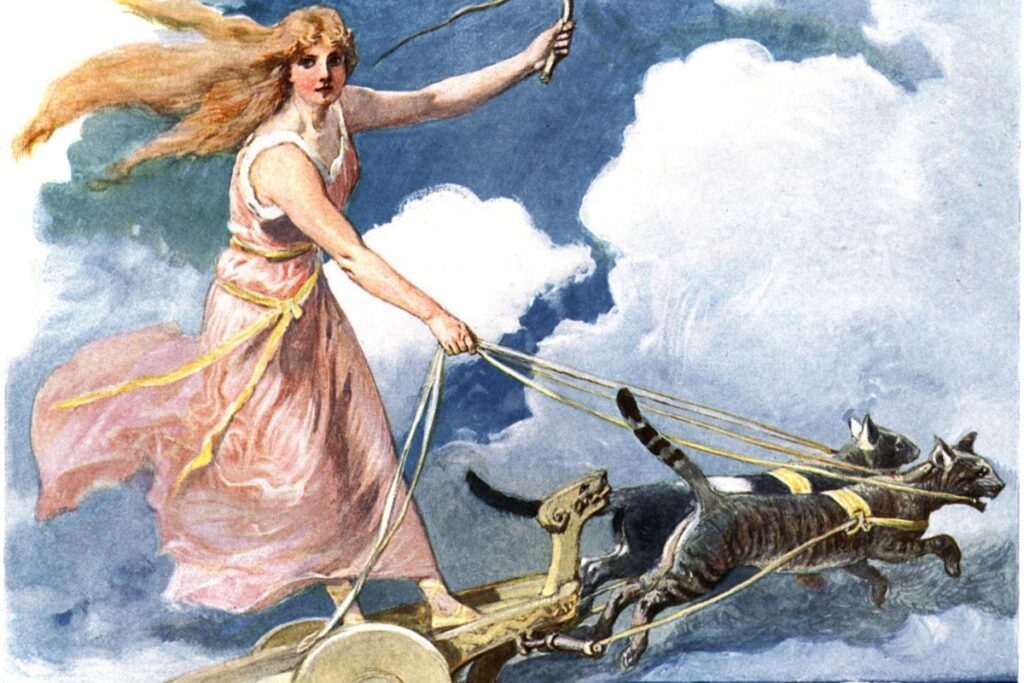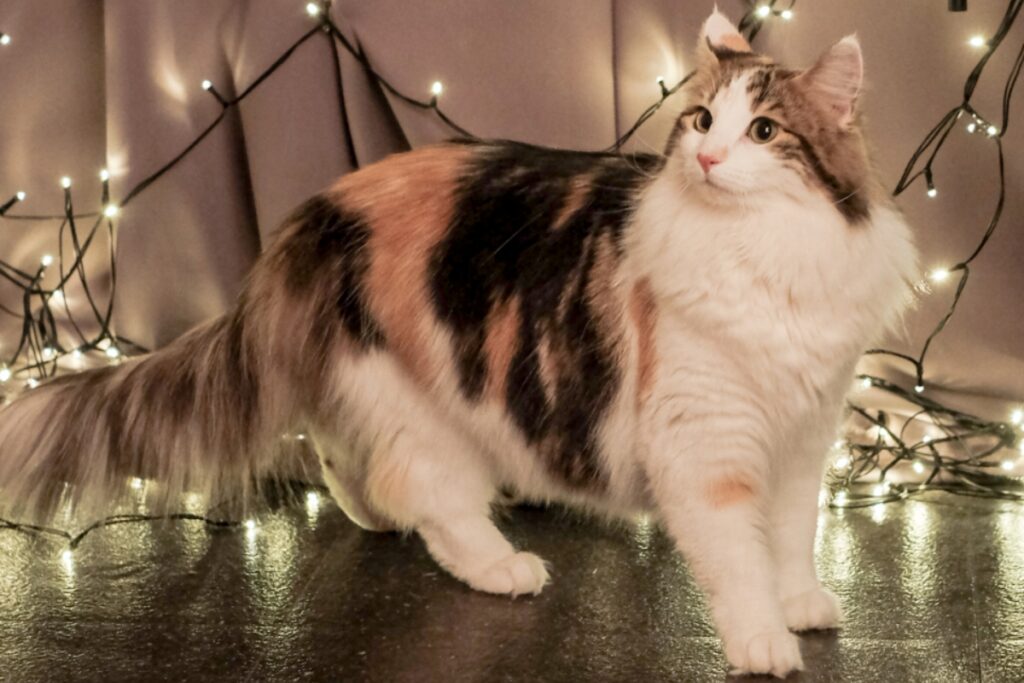
For centuries, the imposing and majestic Norwegian Forest Cat has ruled as one of Scandinavia’s most iconic animals. With their dense fur, formidable hunting skills, and an almost mythical lineage, these cats captured the hearts of the Norse people long ago. Viking sailors, explorers, and even mythological figures admired them not only for their utility but also for their fierce loyalty. Today, the Norwegian Forest Cat remains almost as legendary as the Vikings themselves.
Sacred Roots in Norse Mythology
The Norwegian Forest Cat has deep roots in Norse mythology, tied to some of the most revered figures in Scandinavian folklore. Freyja, the Norse goddess of love, fertility, and beauty, famously drove a chariot drawn by two powerful cats, Bygul and Trjegul—thought to be predecessors of the Norwegian Forest breed. These cats were seen as a blessing from the thunder god Thor, and in many tales, Freyja’s favor was granted to those who treated cats with kindness.

These stories gave cats a special status, connecting them to the divine and embedding them in Norse spiritual beliefs. In other tales, cats demonstrate both wit and strength. For example, one Scandinavian folktale tells of a cat that outsmarts a troll by keeping him distracted until dawn, when sunlight turns him to stone. Such stories highlight the cunning and independent spirit of the breed.
A Viking Seafarer’s Companion
Practicality also played a major role in why Vikings favored cats, particularly the Norwegian Forest Cat, which was well-suited to life aboard Viking ships. Known for their hunting prowess, these cats effectively controlled the rodent population, protecting vital food stores from being destroyed by rats and mice. Archaeological findings from Viking trade ports, especially in northern Germany, confirm that cats were frequent passengers on Viking ships. Their role was not insignificant—rodent infestation could threaten entire journeys and trade missions.
Evidence suggests that Norwegian Forest Cats not only traveled across Scandinavia with the Vikings but also made their way to North America, possibly aboard ships led by explorers like Leif Erikson. The arrival of cats in Greenland and other Viking-settles territories points to their continued presence as essential members of the crew.

Survival in the Northern Climates
One look at the Norwegian Forest Cat makes it clear why this breed could endure the rigors of Scandinavian winters. Thick, waterproof coats shield them from extreme cold, making them very adaptable to the chilly northern climate. Strong, muscular bodies and tufted paws helped them traverse snow and rugged terrain—characteristics that were both admired and respected by Norse communities. Unlike other breeds, Norwegian Forest doesn’t require much care, making them ideal for life on farms and in Viking homesteads, where resources were often limited. Their low-maintenance nature and rugged build contributed to their popularity among Norse people of the past.
Cats as Companions and Commodities
Although Norwegian Forest Cats were valued companions, they weren’t immune to the Vikings’ needs for survival. With fur being crucial for warmth in the harsh northern winters, Vikings valued pelts from a variety of animals. Evidence suggests that in some settlements, such as the fortress at Nonnebakken in Denmark, people also used cats’ pelts. Archaeologists discovered remains of cats with clear signs of having been skinned, indicating that they may have been harvested for their fur after they’d reached the end of their practical lives as hunters.
However, this darker side didn’t diminish the overall significance of these felines. Cats held dual roles in Norse society: practical guardians of the food supply and, at times, contributors to the warm clothing that protected people from the bitter cold.

The Spread of the Norwegian Forest Cat
Historians suggest that cats were introduced to Scandinavia through two major migrations, with the second wave being crucial for their presence in Viking society. This migration began in Egypt around 1700 BCE and reached Scandinavia between the 5th and 13th centuries CE, making its way north as maritime technology improved. Viking ships facilitated the rapid spread of these cats across the North Sea and into new lands, establishing the Norwegian Forest Cats as a common presence throughout Europe.
By the Viking Age, the Norwegian Forest Cat had evolved into a slightly larger breed, likely influenced by their contact with humans, which provided a steady food supply. Unlike dogs, whose size and demeanor were selectively bred by humans, cats mostly domesticated themselves, with little interference from people. As a result, they retained much of their natural agility and strength, which proved useful to the Vikings in both rural and urban settings.
The Norwegian Forest Cat Today
Today, Norwegian Forest Cats still retain many of the traits that made them invaluable to the Vikings. They are intelligent, independent, and strong—but gentle. The breed doesn’t back down easily, much like the Norse people of ancient times. Many enthusiasts appreciate the cats’ wild appearance and impressive build, features that harken back to their days aboard Viking ships and among Norse gods. While they may no longer hunt on Viking voyages, Norwegian Forest Cats continue to captivate pet owners around the world.

From Viking warriors to modern cat lovers, the Norwegian Forest Cat has cemented its place in history and mythology. A symbol of Norse strength and resourcefulness, they remain an enduring reminder of the bond between humans and animals. These cats were more than pets; they were partners, protectors, and an embodiment of a rugged lifestyle that required a wild sense of adventure.
Click here to visit the AnimalPlanet HQ profile page and be sure to hit the follow button!
Sources:







